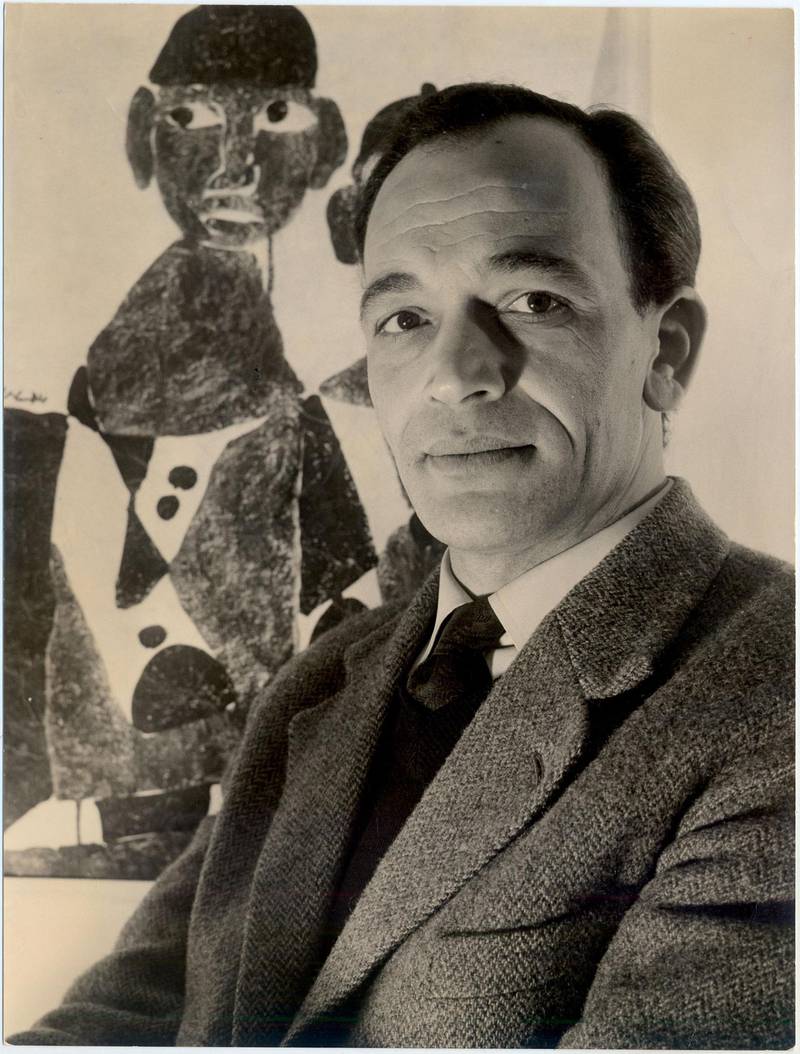Biography

Hamed Abdalla (1917-1985), was a pioneer of Egyptian and Arab modernism. A self taught artist from a modest peasant family pf upper Egypt, he rose to prominence early in his career. Abdalla started painting at the age of 10 inspired by his fellah’s environnement, later his work centred on his development of what he called “the Creative word”, written words expressed in paint, blending abstraction and human forms.
He had his first solo exhibition in 1941, before going on to show widely throughout Egypt in the 1940s including a solo show at the Museum of Modern Art Cairo (1949), when art critics, such as Badr Eddine Abu Ghazi, considered his work as a new school for egyptian Art. At the same time Abdalla opened his Atelier in Cairo to teach new generation of artists such as Tahia Halim, Gazbia Serri, Enjy Efflatoun, Georges El Bahgory… His first trip to Paris saw him exhibit at the Gallery Bernheim-Jeune (1950), followed by a group show at Palais du Louvre, and a show at Egyptian Institute, London (1951). From the mid 1950s he was exhibiting throughout Europe, the US and Asia, including a group show at the Metropolitan Museum, New York (1956). He left Egypt for Danemark (1956) and France (1966), but was commited to the pan Arab movement, and exhibited widely in the Middle East and North Africa. His works are on show in various international collections and museums such as Egyptian Modern Art Museum Cairo, Metropolitan Museum of Art New York, Tate Modern London, Barjeel Art collection, Museum of Modern Art Tunis, Mathaf Doha, Institut du Monde Arabe Paris, Dalloul Art Foundation Beirut…